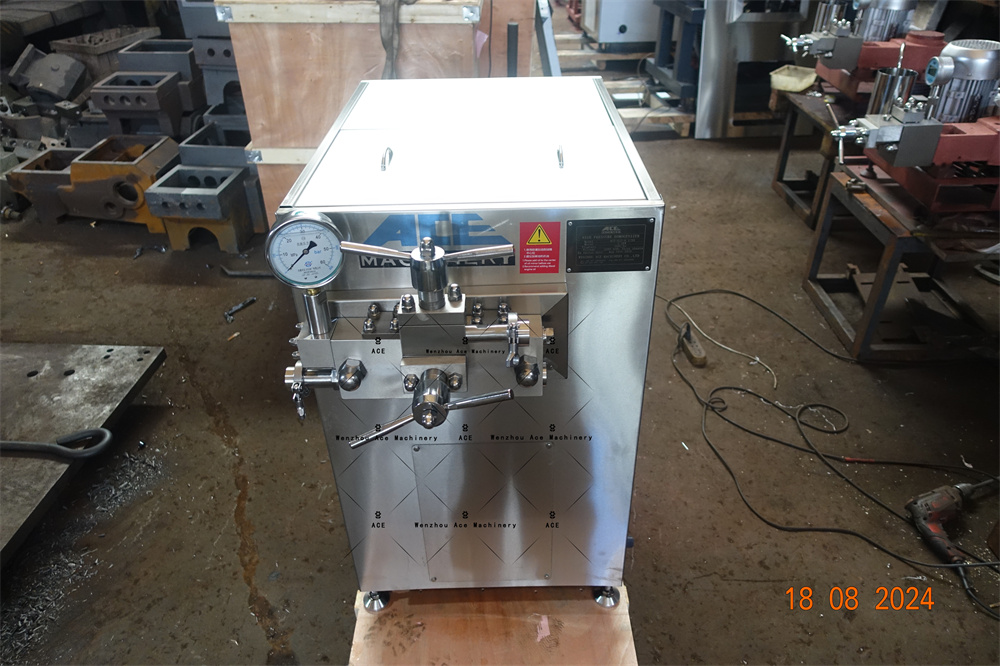Pasteurization is the process of applying heat to food and beverages to kill pathogens and extend shelf life.
Typically, the heat is below the boiling point of water (100°C or 212°F). While pasteurization can kill or inactivate many microorganisms, it is not a form of sterilization, as bacterial spores are not destroyed. Pasteurization extends shelf life by heat inactivation of enzymes that spoil food.

Key Points: Pasteurization
Pasteurization is the process of using low heat to kill pathogens and inactivate spoilage enzymes. It does not kill bacterial spores, so pasteurization does not truly sterilize the product. The process is named after Louis Pasteur, who invented a method to kill microbes in 1864, though the technique has been in use at least since 1117 AD.
Commonly Pasteurized Products
Pasteurization can be used for both packaged and unpack aged solid and liquid products. Commonly pasteurized products include beer, canned food, dairy products, eggs, fruit juices, milk, nuts, syrups, vinegar, water, and wine.
History of Pasteurization
Pasteurization is named after French chemist Louis Pasteur, who developed a technique in 1864 to heat wine to 50-60°C before aging to kill microbes and reduce acidity. However, this technique was used in China at least as early as 1117 AD to preserve wine. In 1768, Italian scientist Lazaro Spallanzani demonstrated how to heat broth to boiling and seal containers immediately to prevent spoilage. In 1795, French chef Nicolas Alpert preserved food by sealing it in glass jars and immersing them in boiling water (canning). In 1810, Peter Durand applied a similar method for preserving food in tins. Although Pasteur applied his process to wine and beer, it was not until 1886 that Franz von Soxhlet suggested pasteurizing milk.
How Pasteurization Works
The basic premise of pasteurization is that high temperatures can kill most pathogens and inactivate certain proteins, including enzymes that cause food spoilage. The exact process depends on the nature of the product. For example, liquids are pasteurized as they flow through pipes, where they may be directly heated or heated using steam/hot water. Next, the liquid is cooled. Liquid pasteurization is conducted in a closed system to avoid contamination during cooling.
Food can be pasteurized after it has been packaged into containers. For glass containers, hot water is used to reach the required temperature to avoid glass breakage. For plastic and metal containers, steam or hot water may be used.
Improving Food Safety
Early pasteurization of wine and beer aimed to improve flavor. The primary goal of canning and modern food pasteurization is food safety. Pasteurization kills yeast, molds, and most spoilage and pathogenic bacteria. The impact on food safety is significant, especially concerning milk.
Milk is a good growth medium for many pathogens known to cause tuberculosis, diphtheria, scarlet fever, brucellosis, Q fever, and food poisoning caused by Salmonella, E. coli, and Listeria. Before pasteurization, raw milk caused many deaths. For example, between 1912 and 1937, about 65,000 people in England and Wales died from tuberculosis contracted from consuming raw milk. After pasteurization, milk-related illnesses dropped dramatically. According to the CDC, from 1998 to 2011, 79% of dairy-related outbreaks were due to consuming raw milk or cheese.
How Pasteurization Affects Food
Pasteurization greatly reduces the risk of foodborne illness and extends shelf life by several days or weeks. However, it does affect the texture, flavor, and nutritional value of food.
For example, pasteurization increases the concentration of vitamin A, reduces the concentration of vitamin B2, and affects several other vitamins for which milk is not a primary nutritional source. The color difference between pasteurized and unpasteurized milk is actually caused by the homogenization step before pasteurization.
Pasteurizing juice has no significant effect on color but does cause some loss of aromatic compounds, a decrease in vitamin C, and a reduction in carotene (a form of vitamin A).
Pasteurizing vegetables can cause some tissue softening and nutritional changes. Some nutrient levels decrease, while others increase..
If you need to buy a pasteurizer, please contact us!






